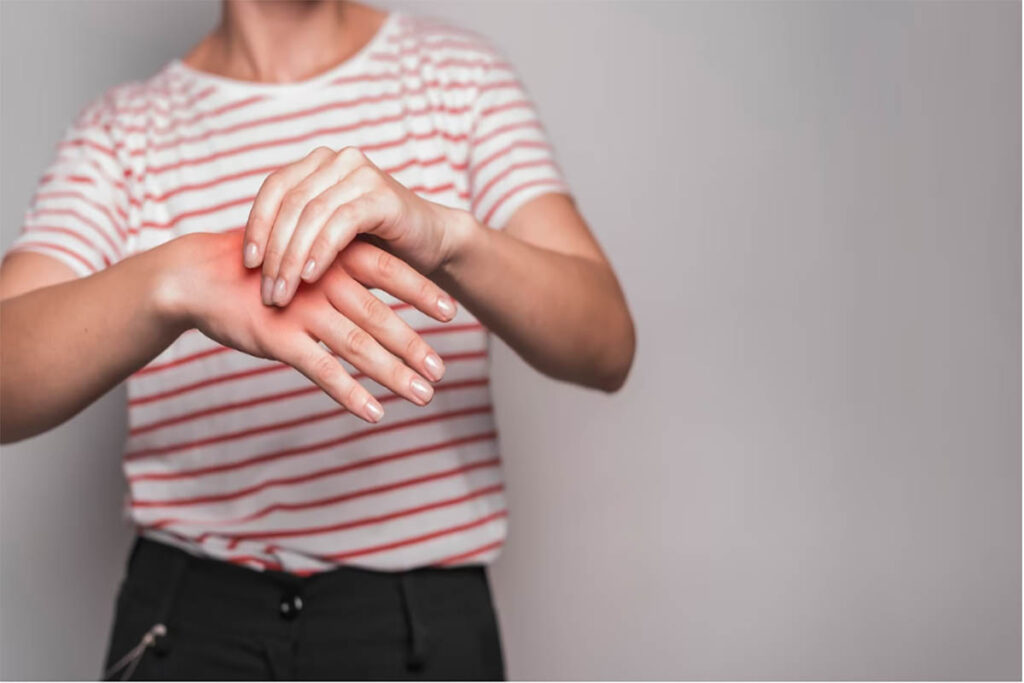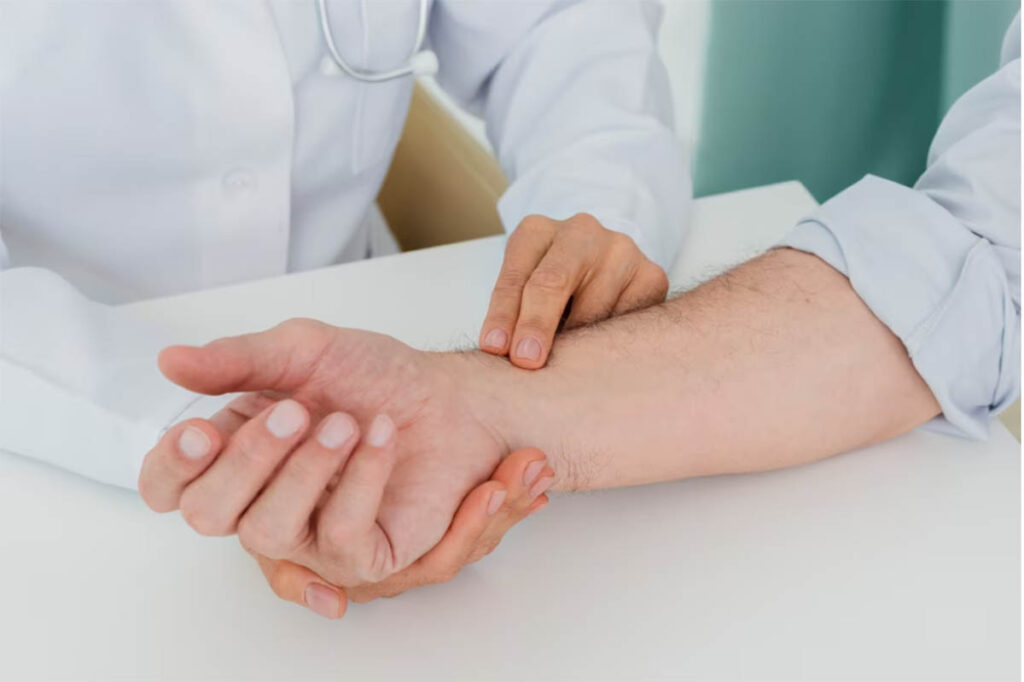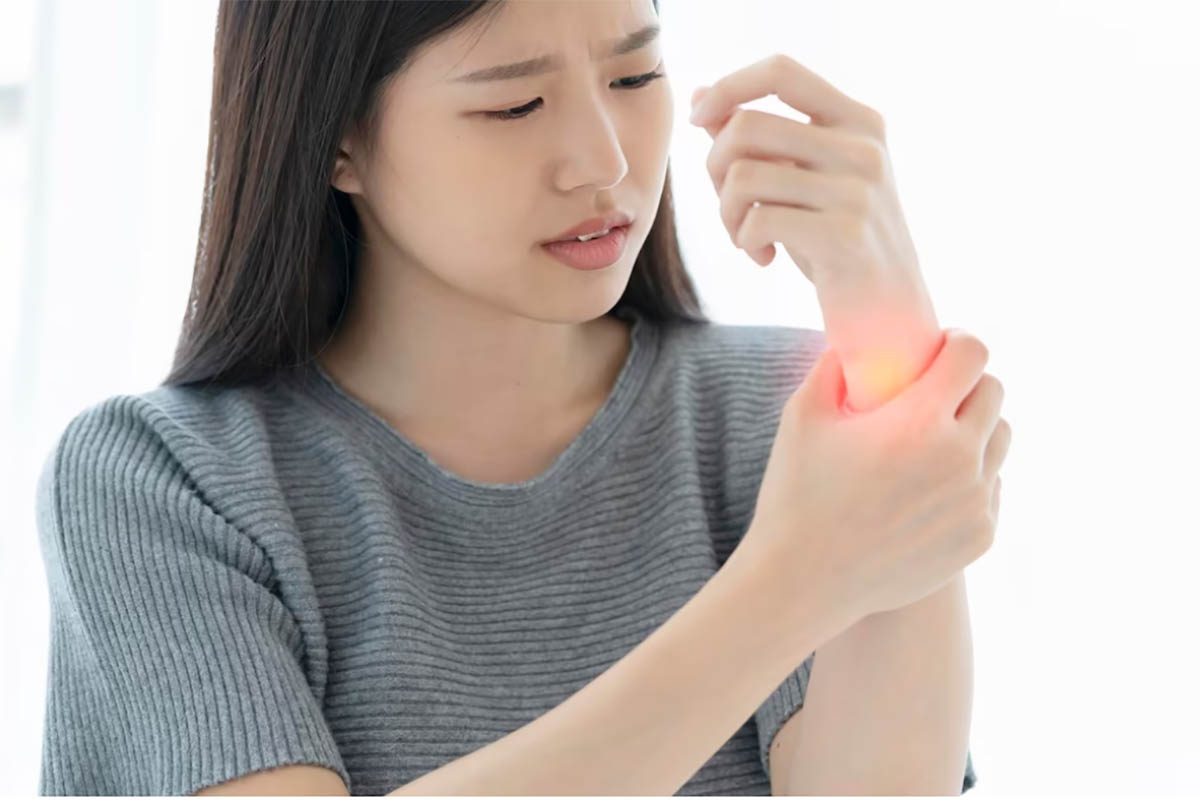Introduction
Pain in the finger joints can be a common and uncomfortable problem that can affect daily activities and hand function. The finger joints are complex structures composed of bones, cartilage, ligaments, tendons, and synovial fluid. Any damage or inflammation in these structures can lead to finger joint pain. Understanding the causes, symptoms, diagnosis, treatment options, and preventive measures for pain in finger joints is crucial for managing this condition effectively. In this comprehensive 3000-word article, we will explore finger joint pain in detail and provide insights into how to alleviate pain and promote finger joint health.
Section 1: Anatomy of Finger Joints
The hand is a remarkable tool that allows humans to perform a wide range of intricate tasks. It consists of 27 bones, with each hand having 14 finger bones (phalanges) arranged in three sections: distal, middle, and proximal phalanges. These bones articulate with one another at the finger joints. The joints in the hand include:
- Metacarpophalangeal (MCP) Joints: The MCP joints connect the metacarpal bones to the proximal phalanges. They allow the fingers to bend and straighten.
- Proximal Interphalangeal (PIP) Joints: The PIP joints connect the proximal phalanges to the middle phalanges. They also enable finger bending.
- Distal Interphalangeal (DIP) Joints: The DIP joints connect the middle phalanges to the distal phalanges and allow the tip of the fingers to bend.
These joints are supported by ligaments, tendons, and cartilage, which provide stability and allow smooth movements.
Section 2: Common Causes of Pain in Finger Joints
Pain in the finger joints can occur due to various reasons, ranging from overuse injuries to medical conditions. Common causes include:
- Osteoarthritis: A degenerative joint disease that results from the breakdown of cartilage, leading to pain, swelling, and decreased joint flexibility.
- Rheumatoid Arthritis: An autoimmune disorder where the body’s immune system attacks the synovial membrane, causing inflammation and joint damage.
- Gout: A form of arthritis caused by the accumulation of uric acid crystals in the joints, often affecting the fingers.
- Trauma: Injuries such as fractures, sprains, or dislocations can lead to acute finger joint pain.
- Tendinitis: Inflammation of the tendons that attach muscles to bones, commonly seen in conditions like De Quervain’s tenosynovitis.
- Trigger Finger: A condition where the finger gets stuck in a bent position and may cause pain and clicking sensations.
- Ganglion Cysts: Non-cancerous lumps filled with fluid that can develop around the finger joints, causing discomfort.
- Carpal Tunnel Syndrome: Compression of the median nerve in the wrist can lead to pain, tingling, and weakness in the fingers.
Section 3: Symptoms of Finger Joint Pain

The symptoms of finger joint pain can vary depending on the underlying cause. Common symptoms include:
- Pain: Persistent or intermittent pain in the finger joints, which may worsen with movement or pressure.
- Swelling: Visible or palpable swelling around the finger joints, accompanied by warmth and redness in some cases.
- Stiffness: Difficulty bending or straightening the fingers due to joint stiffness.
- Limited Range of Motion: Reduced flexibility and difficulty performing fine motor tasks with the fingers.
- Clicking or Snapping Sensation: Audible or tactile sensations of clicking, snapping, or grinding in the finger joints during movement.
- Numbness or Tingling: Sensations of numbness, tingling, or “pins and needles” in the fingers, especially with nerve-related conditions.
Section 4: Diagnosis of Finger Joint Pain
Accurate diagnosis is crucial for determining the underlying cause of finger joint pain and guiding appropriate treatment. The following methods are commonly used for diagnosis:
- Medical History: The healthcare provider will inquire about the patient’s symptoms, medical history, and any recent injuries or activities that may have contributed to the finger joint pain.
- Physical Examination: A thorough examination of the fingers and hand, assessing range of motion, tenderness, swelling, and signs of inflammation.
- Imaging Studies: X-rays, MRI, or ultrasound may be conducted to visualize the finger joints’ internal structures and detect any abnormalities or signs of joint damage.
- Blood Tests: Blood tests can help identify markers of inflammation, uric acid levels, or autoimmune conditions.
- Aspiration: A sample of fluid may be aspirated from the affected joint for analysis to determine the cause of inflammation.
Section 5: Treatment Options for Finger Joint Pain
Treatment for finger joint pain depends on the underlying cause and the severity of the symptoms. Common treatment options include:
- Rest and Immobilization: Resting the affected fingers and using splints or braces to immobilize the joint can alleviate pain and promote healing.
- Medications: Over-the-counter pain relievers, such as acetaminophen or nonsteroidal anti-inflammatory drugs (NSAIDs), can help reduce pain and inflammation.
- Corticosteroid Injections: Injections of corticosteroids into the affected joint can provide rapid relief from inflammation and pain.
- Physical Therapy: Targeted exercises and stretches can help improve finger joint flexibility, strength, and reduce pain.
- Hot and Cold Therapy: Applying hot packs or cold compresses can help reduce inflammation and alleviate pain.
- Joint Aspiration: Draining excess fluid from an inflamed joint can relieve pain and improve mobility.
- Lifestyle Modifications: Adopting ergonomic practices, such as using proper hand positioning during activities, can prevent further strain on the finger joints.
- Surgical Intervention: In severe cases or when conservative treatments fail, surgical options such as joint debridement or joint fusion may be considered.
Section 6: Preventive Measures for Finger Joint Pain

Understand the Importance of Joint Health
Before delving into preventative measures, it is essential to understand the significance of joint health. The finger joints, like other joints in the body, are responsible for facilitating movement, stability, and flexibility. They consist of bones, cartilage, ligaments, tendons, and synovial fluid, all of which work together to ensure smooth and pain-free movements. Maintaining healthy finger joints can prevent conditions such as osteoarthritis, rheumatoid arthritis, and tendinitis, which are common causes of finger joint pain.
Preventative Measures for Finger Joint Pain
Hand and Finger Exercises
Regular hand and finger exercises can help strengthen the muscles surrounding the finger joints and improve joint flexibility. Simple exercises like finger bends, fist openings, and finger stretches can be performed daily to promote joint health. Consulting with a physical therapist can provide tailored exercises to address specific needs and prevent joint stiffness.
Maintain a Healthy Weight
Excess body weight can put additional strain on the finger joints, leading to increased wear and tear. Maintaining a healthy weight through a balanced diet and regular exercise can alleviate pressure on the joints and reduce the risk of finger joint pain.
Ergonomic Practices
Practicing proper hand and wrist positioning during daily activities can significantly reduce stress on the finger joints. When typing on a keyboard, using a mouse, or performing repetitive tasks, maintaining a neutral wrist position can prevent strain and discomfort.
Take Breaks
Frequent breaks during repetitive activities, such as typing or crafting, can give the finger joints a chance to rest and recover. Take short breaks every hour to stretch and flex the fingers, promoting circulation and reducing the risk of joint stiffness.
Protect Your Hands
Wearing protective gear during activities that may expose the fingers to impact or injury can prevent joint damage. For example, using gloves while gardening or working with tools can reduce the risk of finger joint injuries.
Avoid Overexertion
Overuse of the fingers and hands can lead to fatigue and strain on the finger joints. Listen to your body’s signals and avoid pushing through pain or discomfort during repetitive activities.
Maintain Good Posture
Proper posture is essential for overall joint health, including the finger joints. Maintaining good posture aligns the spine and reduces pressure on the hands and fingers. Pay attention to your sitting and standing posture, and make necessary adjustments to avoid unnecessary strain on the finger joints.
Use Proper Hand Tools
Using ergonomic hand tools with comfortable grips can reduce the strain on the finger joints during manual tasks. Seek tools with cushioned handles and designs that distribute pressure evenly across the fingers.
Stay Hydrated
Drinking enough water is crucial for joint health, as it helps keep the cartilage surrounding the finger joints lubricated. Hydrated cartilage is more resilient and less prone to wear and tear.
Regular Stretching
Incorporate finger and hand stretches into your daily routine to maintain joint flexibility and prevent stiffness. Gentle stretching exercises can be done throughout the day, even during breaks at work or while watching TV.
Seek Medical Attention
If you experience persistent or severe finger joint pain despite preventative measures, it is essential to seek medical attention. Early diagnosis and treatment can prevent further joint damage and improve the effectiveness of interventions.
Conclusion
Preventing finger joint pain is vital for maintaining hand function and overall well-being. By incorporating simple preventative measures and lifestyle changes into your daily routine, you can promote joint health and reduce the risk of finger joint pain. Engaging in hand exercises, maintaining a healthy weight, using ergonomic practices, and taking breaks during repetitive tasks can all contribute to healthier and pain-free finger joints. Remember that prevention is always better than cure, and a proactive approach to joint health can lead to a more fulfilling and active lifestyle.



